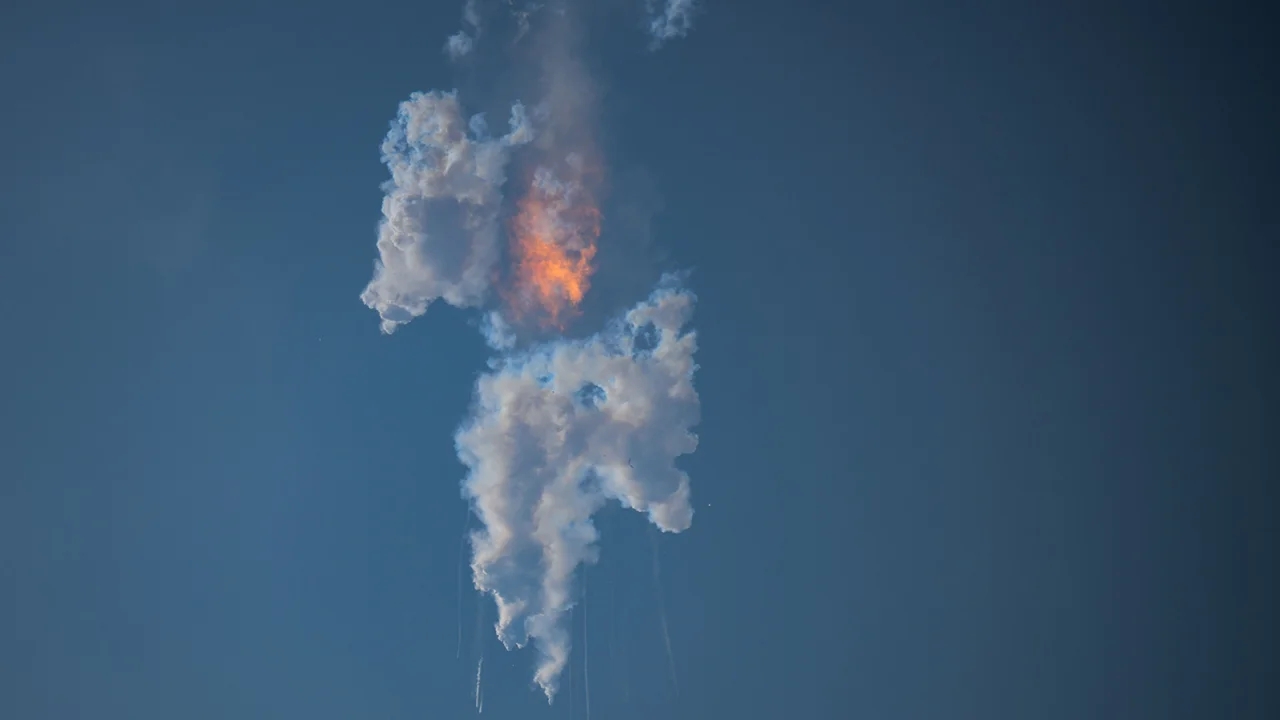() — After the first test launch of a SpaceX Starship rocket, the most powerful launch vehicle ever built, went up in flames over the Gulf of Mexico on Thursday, the company tried to frame the mission as a success.
“With a test like this, success comes from what we learn, and we’ve learned a lot,” says a posting about the launch on SpaceX’s website.
That has long been the ethos of the company, leading it to overcome explosions of its early “Grasshopper” test vehicles, failed attempts to land booster rockets, and previous Starship test mishaps.
Was it a success, a flop, or a combination of both?
In the space industry, Thursday’s Starship test mission was not considered a complete failure, according to Caleb Henry, director of research at space research company Quilty Analytics.
“The expectation was just that: a test,” Henry said. “It’s important to fail during tests to have a better chance of success” in the future.
In general, he added, the space community had a very favorable reaction.
“The industry is happy to see this program progressing,” he added. “Nobody interprets this as something that is going to slow down their progress… I think that internally it is known that a test like this is not a setback.”
However, there are negative aspects. One is optics: it doesn’t help a company’s reputation to be associated with public, explosive bugs. The optics problem can also turn into funding problems, said Dr. Garrett Reisman, a former NASA astronaut, engineering professor and SpaceX consultant.
Still, SpaceX enjoys an unimpeachable reputation in the space industry. And there’s a good reason for that: The reliability of SpaceX’s Falcon rockets and Dragon spacecraft, which have flown for years and even carried NASA astronauts into orbit, give the company its enviable status within the industry.
Money was lost in the Starship explosion, though how much is unclear. SpaceX remains a private company and is not required to disclose its development spending.
SpaceX CEO Elon Musk told in 2019 that he believes the cost to develop Starship will be “closer to two or three (billion dollars) than 10 (billion).” NASA has also given SpaceX contracts worth up to $4 billion for two moon landing missions, though that money is paid out as SpaceX reaches certain milestones, Reisman explained.
What happened at launch
The Starship vehicle consists of two parts: the Super Heavy rocket booster, a 69-meter-tall cylinder that houses 33 engines and provides the first burst of power on liftoff. On the rocket goes the Starship spaceship, 50 meters high.
The vehicle lifted off from the launch pad near Brownsville, Texas, in the far south of the state.
During ascent, some of the Super Heavy rocket’s 33 motors shut down unexpectedly.
The Starship is also to separate from the Super Heavy rocket once the latter has consumed most of its fuel, but this did not occur.
A few minutes after takeoff, the vehicle began to lurch, tail over head. Then, four minutes into the flight, the vehicle’s flight termination system, or self-destruct, was activated, causing the rocket to explode to prevent it from drifting off course.
The SpaceX starship exploded after launching a flight test on April 20, 2023. Credit: Patrick T. Fallon/AFP/Getty Images
How SpaceX builds rockets
The reason SpaceX accepts fire accidents lies in its approach to rocket development. In engineering terms, it’s called “spiral development,” and it’s not the same approach NASA uses.
At a fundamental level, SpaceX does not intend to build a single rocket, vigorously test it on the ground, and virtually guarantee success on the first flight attempt, as is the traditional way of building rockets and as NASA developed its Space Launch System rocket.
“SpaceX is completely different,” Reisman says.
There isn’t a single Starship vehicle that’s been years in the making. The company has assembled a fleet of vehicles and has been modifying them as the tests were carried out. Since the vehicles are relatively cheap, having one blow up isn’t much of a hassle. Rather, the explosion offers crucial data that informs how design will change in the future.
“If you look at the others, it takes a decade or more to develop a rocket,” explains John Muratore, who worked for NASA for 24 years at the Johnson Space Center in Houston, worked at SpaceX for a decade, and is now an engineering consultant. . “We release new versions and improvements all the time.”
SpaceX already has a lineup of new Super Heavy boosters and Starship spacecraft to test.
The SpaceX rocket that flew Thursday “was actually a basic rocket,” Reisman added. There were no fancy accessories, no passenger seats, and no valuable satellite in the cargo compartment.
“It wasn’t about building it in its final form … because what we wanted to know were the important things: Are the engines working? Are the airframes working? Are the flight computers, avionics and software working?” Reisman said .
Muratore explains that engineers call this type of “raw” vehicle a “minimum viable product”, designed “to answer an unknown”, that is, to better inform future vehicles.
“What always kills engineering projects are the unknowns,” he explains. “You end up spending huge amounts of money trying to quantify the unknowns.”
SpaceX’s approach is to accept more risk in the name of getting answers to those questions.
Bottom line: SpaceX’s rocket explosion wasn’t the disaster it seemed. According to Reisman and Muratore, it is more an expectation inherent in the methods used by the company’s engineers.
What will happen now?
Muratore said engineers will analyze the data collected on Thursday’s flight. Many things were tested for the first time: never before had an attempt been made to fire 33 huge Raptor engines at the same time for a flight test. The use of methane as fuel is also a first for SpaceX. And the vehicle is made of steel, while other rockets typically use lighter metals and carbon composites.

Musk even suggested that he would consider Thursday’s test a success if the rocket cleared the launch tower, and it did.
Now what’s next for SpaceX is trying to determine exactly what went wrong.
Muratore said engineers will analyze data from the Raptor engines. Among the questions that will be asked: How did the vibrations affect the flight? What temperatures were reached inside the propulsion systems? And they will analyze the general behavior of the vehicle: how did the on-board guidance system work? Why was he bouncing?
The company will also assess the damage to the launch pad and surrounding infrastructure and prepare for another flight.
Musk said in a tweet that this could lead “a few months”although he is known for broadcasting missed deadlines.















